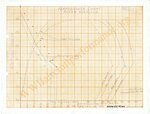MIflyer
Captain
I see, so you theoretically could have a P-40F right after Pearl Harbor. Disregard my previous post then
First P-40F to get into actual combat service that I know of was for Operation Torch. So it took about 11 months from first flight to combat deployment.
By the way, interesting thing was that whille all the P-40's at PH in Dec 41 were P-40B's, in the PI they were mostly P-40'E's with only one squadron of B's. I wonder if they sent the B's back to HI or if only one squadron of B's made it to the PI before E models came.

